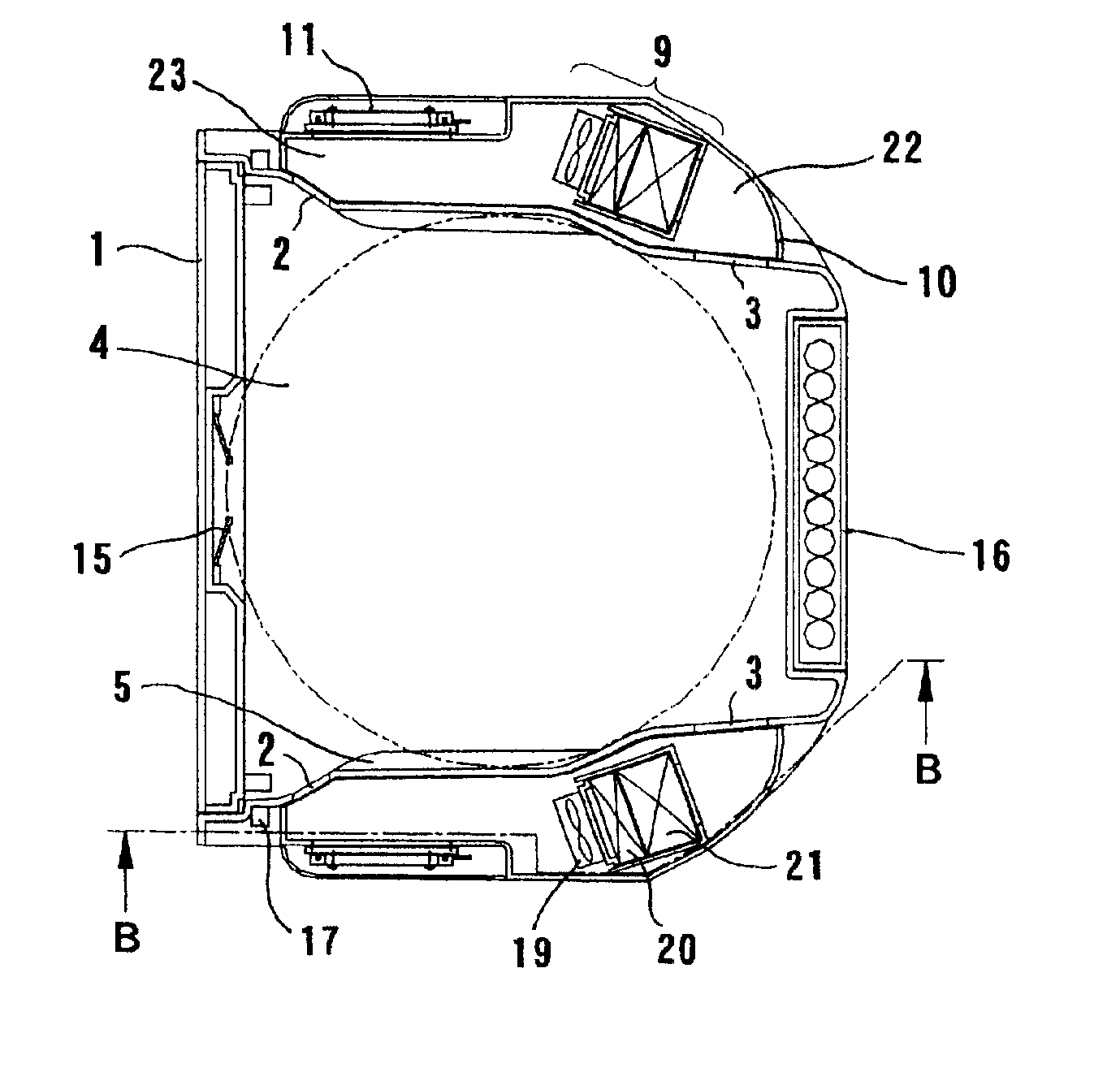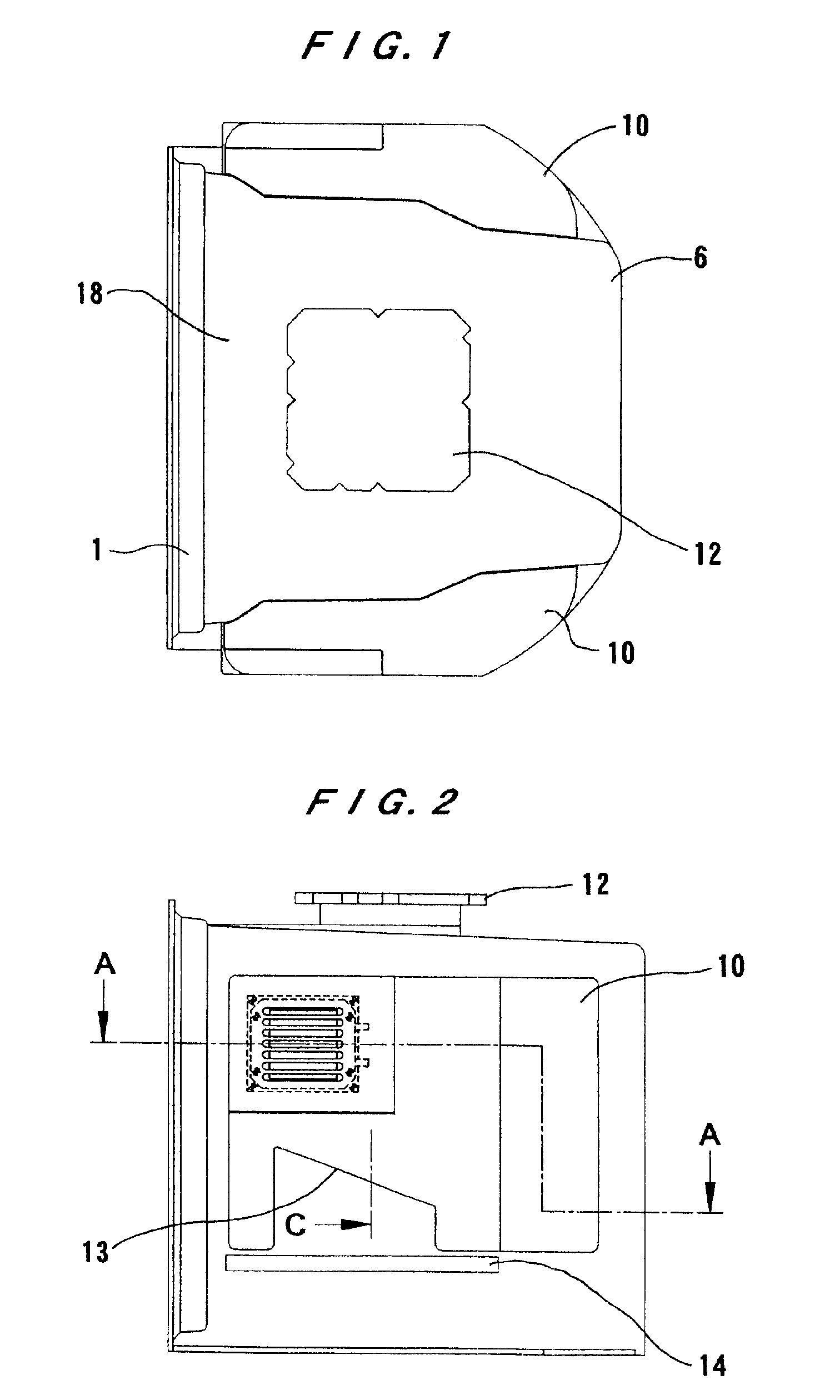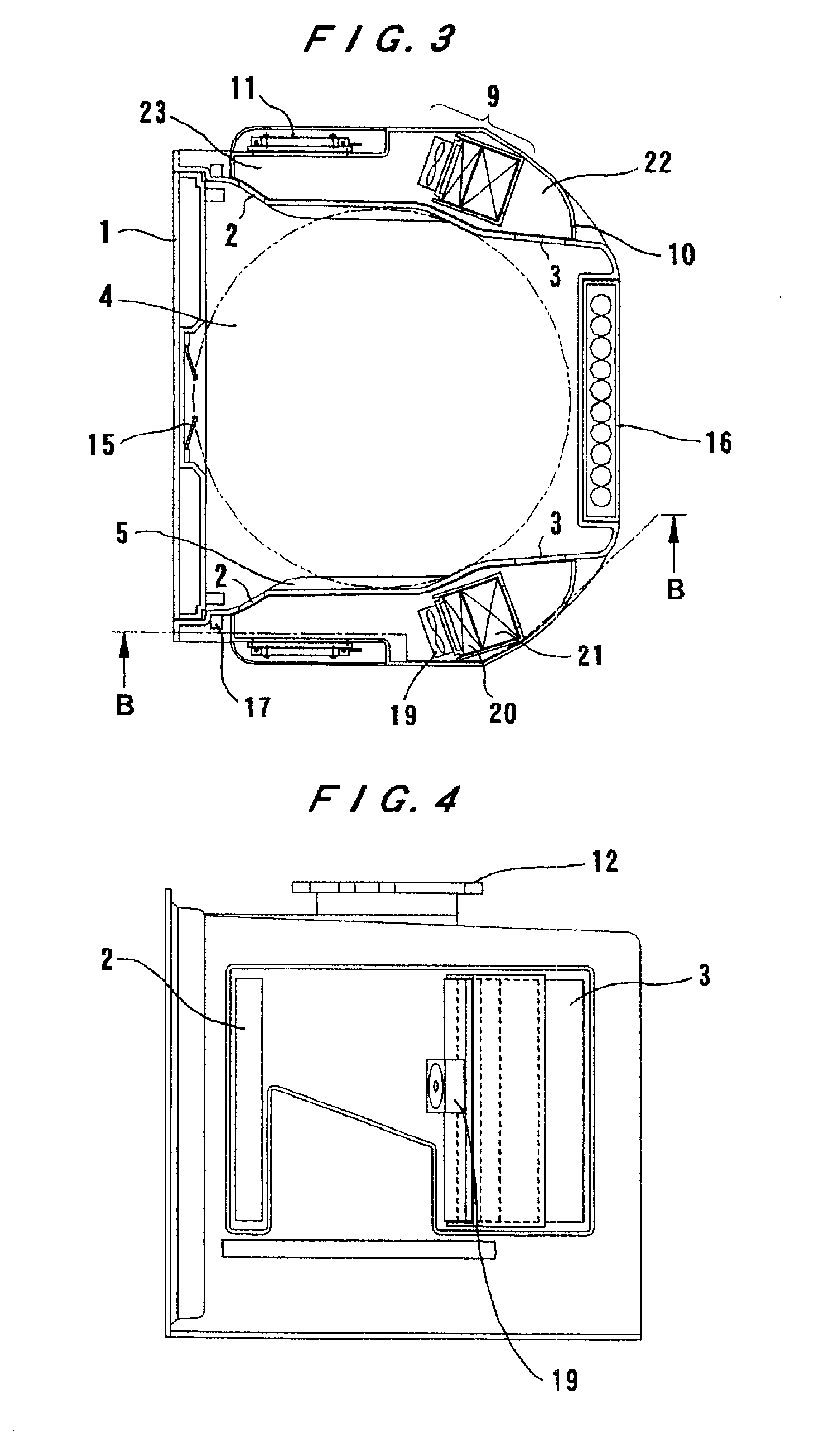Substrate transport container
a technology for transporting containers and substrates, applied in the direction of transportation and packaging, instruments, originals for photomechanical treatment, etc., can solve the problems of loss of resolution, increase in weight of transport containers, and corrosion of wirings
- Summary
- Abstract
- Description
- Claims
- Application Information
AI Technical Summary
Benefits of technology
Problems solved by technology
Method used
Image
Examples
fourth embodiment
[0040]FIG. 27 is a bottom view of the transport container in the present invention;
[0041]FIG. 28A is a diagram to show a check valve of an air inlet port in a closed state, and FIG. 28B shows the valve in an open state;
[0042]FIG. 29A is a diagram to show as check valve of an air outlet port in a closed state, and FIG. 29B shows the valve in and open state;
[0043]FIG. 30 is a diagram to show an example of a wiring circuit forming process for a semiconductor chip using copper wire and a low dielectric insulation film; and
[0044]FIGS. 31A to 31H are diagrams to show various methods for discharging static electricity from the transport container.
DETAILED DESCRIPTION OF THE PREFERRED EMBODIMENTS
[0045]Preferred embodiments will be explained in the following with reference to the drawings attached.
[0046]First, the necessity for a substrate transport container (pod), which is compatible for automation in semiconductor device manufacturing plants, will be explained. To prevent human errors by ...
first embodiment
[0049]Next, specific structures of the first embodiment will be explained with reference to FIGS. 1 through 7. The essential components are: a door 1 having a latching mechanism that is operable externally by a locking / unlocking device; a container main body 6 having opening sections 2, 3 for allowing the internal atmosphere of the container main body to communicate with air conditioning means and made as a unit body with a holding device 5 for holding the substrates 4 at a given distance; a bottom surface receptor section 8 having a receptor section 7, for seating the container in a specific location, for engaging with the positioning device of the apparatus; a first air conditioning apparatus 9 disposed on the outer surface of the container main body 6; a cover 10 that covers the first air conditioning apparatus 9 and the opening sections 2, 3 and serves as an isolation wall for the outer environment of the container as well as a circulation path; a second air conditioning apparat...
PUM
| Property | Measurement | Unit |
|---|---|---|
| Size | aaaaa | aaaaa |
| Water absorption | aaaaa | aaaaa |
| Concentration | aaaaa | aaaaa |
Abstract
Description
Claims
Application Information
 Login to View More
Login to View More - R&D
- Intellectual Property
- Life Sciences
- Materials
- Tech Scout
- Unparalleled Data Quality
- Higher Quality Content
- 60% Fewer Hallucinations
Browse by: Latest US Patents, China's latest patents, Technical Efficacy Thesaurus, Application Domain, Technology Topic, Popular Technical Reports.
© 2025 PatSnap. All rights reserved.Legal|Privacy policy|Modern Slavery Act Transparency Statement|Sitemap|About US| Contact US: help@patsnap.com



